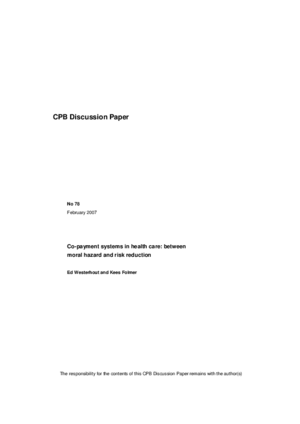Co-payment systems in health care; between moral hazard and risk reduction
This paper investigates what co-payment rate and co-payment maximum characterize the optimal scheme, i.e. the scheme that achieves the highest level of social welfare, within the class of two-part co-payment schemes of which the second part features a zero rate. It also quantifies the welfare losses that correspond with sub-optimal co-payment schemes.
The paper uses a model with optimizing households that are risk-averse, exercise price-elastic demand and are aware of the kinks in their budget constraints. Numerical simulations with this model indicate that the optimal scheme combines a 80% rate with a maximum of about 600 euro. Sensitivity analysis shows that the maximum varies a lot with changes in basic parameters; the 80% value for the optimal co-payment rate is quite robust, though. The welfare losses that correspond to alternative co-payment schemes are generally quite small.
Downloads
Authors

